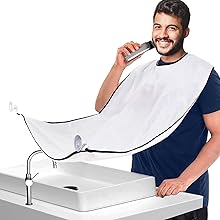
Restored exhibit highlighting Indigenous peoples in B.C. to open at New York museum
CBC
The American Museum of Natural History's Northwest Coast Hall — its oldest exhibit, focusing on Indigenous history from the Pacific Northwest — will reopen this week after a significant restoration project co-led by a Nuu-chah-nulth artist and historian.
Haa'yuups of the Hupacasath First Nation in the Alberni Valley on Vancouver Island helped restore the exhibit along with Peter Whiteley, curator of North American ethnology at the New York museum.
It was a four-year project for Haa'yuups, also known as Ron Hamilton, who also worked with a number of consulting curators from the Coast Salish, Gitxsan, Haida, Haíłzaqv, Kwakwaka'wakw, Nuu-chah-nulth, Nuxalk, Tlingit and Tsimshian communities.
The project was inaugurated last week in the presence of representatives from communities involved in its restoration. It will be open to the public beginning on May 13.
Haa'yuups said that while many museums are talking about making moves toward reconciliation with Indigenous peoples, that cannot be fully accomplished before stolen artifacts are returned.
"When we look at the collection of these materials, it's not a trite political stance on my part to say, 'We still own them. You [the museum] possess them, we own them,'" Haa'yuups told CBC News.
"The only way we're ever going to know the true value of those treasures is by reconnecting our people with those treasures and allowing our people to tell what those treasures are used for."
Haa'yuups said American museums that showcase Indigenous artifacts do not come close to painting the full experience of the peoples they are talking about — the experiences of colonialism, subjugation under various pieces of legislation and the actions that brought the artifacts there in the first place.
He said he hopes to centre Indigenous women with the renewed exhibition, and highlight some of the diverse cultural beliefs expressed by the people who created the objects on display.
The renewed hall features artifacts and placards that are contextualized with stories from the cultures they were taken from. It features 67 carvings from various cultures, totem poles and thousands of other relics.
Many of the artifacts and cultural objects in the Northwest Coast Hall, which opened in 1899, were gathered through various "expeditions" to the Pacific Northwest by settler scholars.
Haa'yuups says most of the objects on display at the Northwest Coast Hall were taken without the consent of the Indigenous peoples then, but a few were purchased through coercion.
He says he thinks a visitor to an American museum right now would not be in awe of the Indigenous peoples the museum claims to showcase, but rather, the institution of the museum itself.
"There's no real effort to get into that experience and to try to help people understand it," he said.





















 Run 3 Space | Play Space Running Game
Run 3 Space | Play Space Running Game Traffic Jam 3D | Online Racing Game
Traffic Jam 3D | Online Racing Game Duck Hunt | Play Old Classic Game
Duck Hunt | Play Old Classic Game